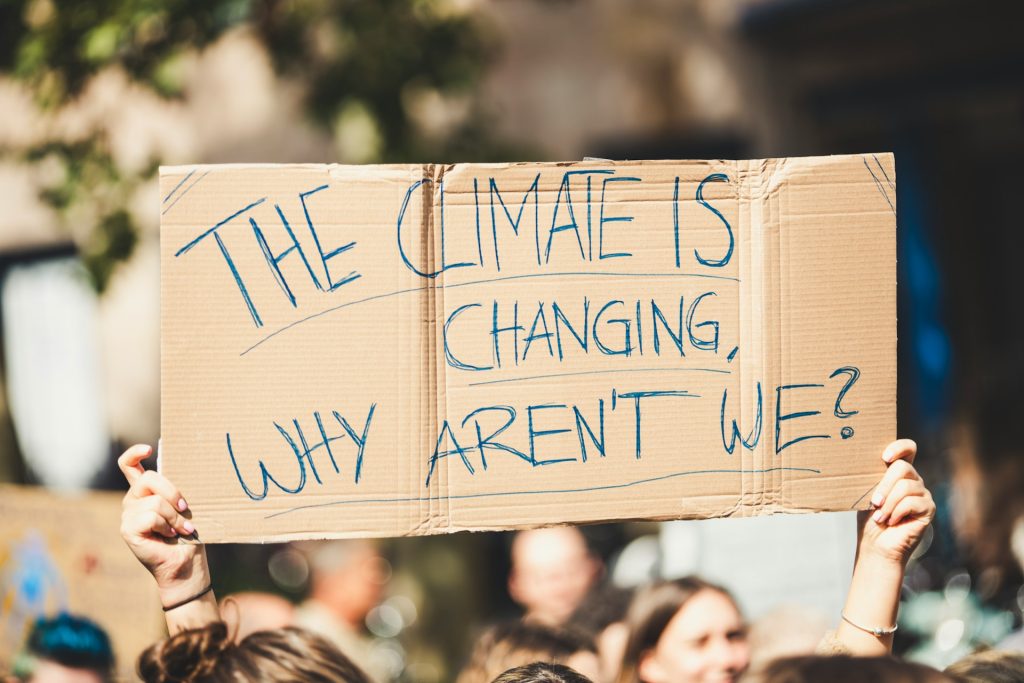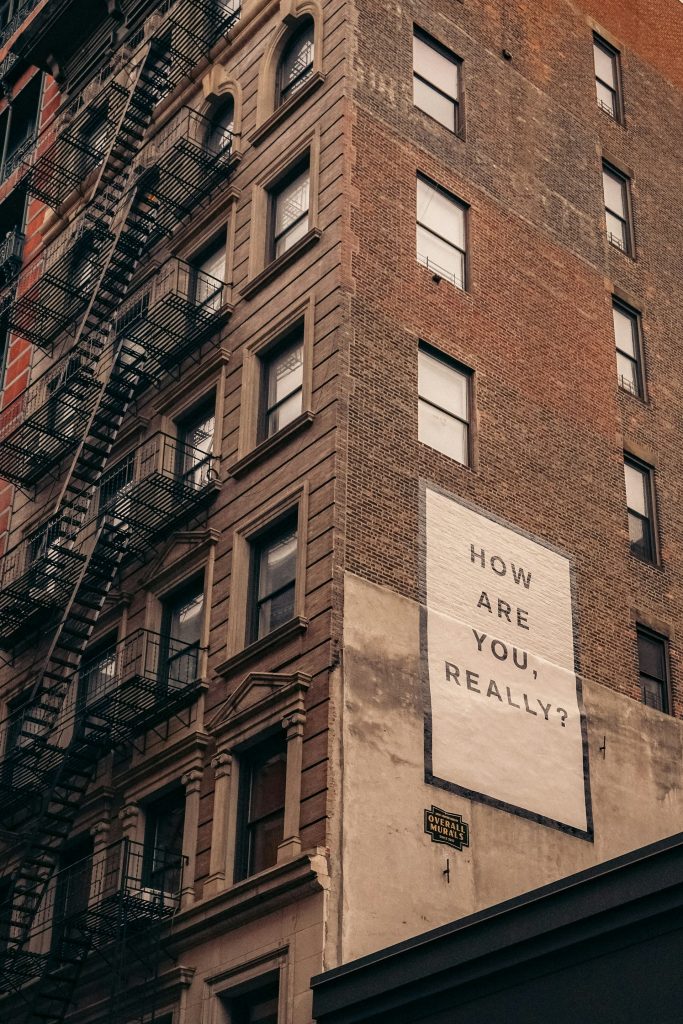Softening the Rhetoric: What Therapy Teaches Us About Social Change
Featured image | by Fares Hamouche
This essay was born out of a decade of training and practicing in the mental health and social justice fields. It is an essay about the ways we wish change happened versus the ways it sometimes actually happens. It’s also an essay about how, when we think about change, we tend to disconnect the way we internally function from the way that the values, social contracts and systems we create function. I wrote this because the social justice world tends to speak of change in a way that doesn’t mesh with what I know as a therapist.
If I distill what I’m saying in these pages, it’s this: We are each composed of many “parts”—habits of thinking, unresolved trauma, memories, emotions, somatic reactions, and the layers of experiences that shape who we are – many of which are protective patterns that will resist change. In therapy, every practitioner learns to engage softly and slowly with these patterns, hospicing the ones whose presence is now harmful and/or unnecessary towards a goodbye that ideally feels respectful of their initial good intentions. When it comes to big social change however, the social rhetoric is often strong, impatient and sharp, with an implicit message that change should happen as soon as awareness of the need for it appears, and that more information will directly lead to such change.

Sitting with clients in their emotional human soup shows a very different picture, one that spotlights how truly difficult and counter-intuitive change often is for one person, let alone a group. Frustrating as this may be, it encourages me to offer an alternate perspective.
An important preface: let’s be clear, I’m in no way going to claim that what I describe is the unilateral path to change. It’s one perspective, colored by my experience as a mental health professional and probably more relevant for a White Western audience.
So let’s go back to our insides. As mentioned above, therapists are often confronted with just how difficult change is and how even the wisest, most flexible therapy clients come up against protective parts of themselves that will do anything in their power to stay connected to familiarity. There are many reasons for this, but the central one is that all living systems strive for homeostasis, and therefore fight against changes in the status quo at the same time they strive to stretch and grow. A funny paradox.
Many forms of therapy assume that we all have various “selves” living within us, all acting with positive intentions for us but sometimes using very counterproductive or dysfunctional tools. These may show up as thoughts, habits, physical sensations. Though this might seem abstract, looking at the everyday patterns that show up in our lives illustrates this beautifully. One client might notice they remain overly focused on work to protect them from feeling a childhood despair that lingers in the background. Some might come to therapy complaining of a sudden strong tension in their throat whenever they feel like letting out some righteous healthy anger, because they remember the price paid for anger when they were a child. Some clients find that they are only able to shift out of a chronic physical illness when they understand that their workaholic lifestyle leaves their body no other option to force them into rest. Indeed, we are complex beings and often, some aspects of us yearn for change while others are afraid of it, and we get tied up in knots.
Protective parts, whose main goal is to shield us from experiencing distress and whose presence is definitely enhanced by trauma, are the first door to change in therapy. They don’t take to it easily though. I’ll often describe these protectors to clients as Rottweilers circling endlessly around their feet. The dog, born out of a situation that felt overwhelming/terribly sad/frustrating/impossible/ possibly even annihilating, is doing its best to make sure nothing like that ever happens to us again. The thing is, it doesn’t understand that its defensive posture is keeping everything out: the bad, the oppressive, the not-aligned, but also the connections, the could-actually-be good stuff, the life juice.
One client story that a professor shared in grad school really stayed with me. This client, for very valid reasons, had a very hard time opening up and feeling safe in the intimacy of the therapeutic space. One day, after many months, she finally was able to share from a deep place during a session. That night, she had a dream that an old man climbed through her window with an axe and decapitated her. My professor, Jungian by training and with a keen eye for symbolism, used this as a clear example of the extremes protective parts will employ to keep us safe from change. Cutting the connection between the heart and the head, between feelings and words, may have been the only way for that client to survive for a long time.
 All that to say, that even changing for the better involves stretching out of something that is familiar, ingrained and often protective, regardless of whether that familiarity has worn out its use or is clearly harmful. It takes a lot to make that change doable: a safe container, understanding how we got where we are, time, compassion, a sense that something might be waiting on the other side with open arms.
All that to say, that even changing for the better involves stretching out of something that is familiar, ingrained and often protective, regardless of whether that familiarity has worn out its use or is clearly harmful. It takes a lot to make that change doable: a safe container, understanding how we got where we are, time, compassion, a sense that something might be waiting on the other side with open arms.
If we’re honest, we’ve all been there: You can see the person/situation/habit is now bringing more bad into your life than good. You can maybe even see the door, have the exit strategy all mapped out. Or conversely you can see the light ahead and the small action that will get you closer to it, and still you just. can’t. do. it. For me, that looked like becoming anorexic for a year and a half before I could find the courage to go against my family’s lofty expectations of excellence and instead, go live in Buddhist monasteries, farms, and communities. Even though a strong intuition in me knew years before that it was the right path.
So how do we do it? Because change does happen, people do find ways to grow. One clear lesson from practicing therapy is that the adaptive patterns we developed in childhood rarely leave or shift to make space for change without first having been acknowledged, understood, and reassured that maybe they don’t need to do their job so intensely anymore.
We are often exhausted from living out those patterns, but sometimes can’t imagine another reality. Therapists help their clients let these patterns go lovingly and envision possible new worlds.
Some of these patterns are especially hard to let go of because they are socially validated and celebrated! But it is worth considering whether the habit of wielding power – like a CEO would – is draining as much as it is energizing, and demands a counter-balance. Perhaps power always secretly wishes to be ‘spread out’, if it could just trust that others would show up.
We need to acknowledge the loss of certain aspects of ourselves, necessary as it may be. Loss, the bittersweet, ghostly figure in the room who will not be ignored. There is no change without loss, or at least presumed loss. Loss of status, of certainty, of love, of others’ esteem, of the foundation that kept us strong.

Loss demands a process. And not just the big losses, the deaths, the disease, the love-of-your-life breakups. Inner deconstruction and expansion of identity also demand a loss and a process. That doesn’t mean the process must be long and torturous , but it does mean it is good to honour loss, even for a brief time. The structures we let go of to embody a stronger, more aligned version of ourselves may also be the structures that enabled us to face each day until now.
When we start to dismantle them, there better be some scaffolding in place, because some parts will resist or behave erratically. Ezra Klein writes in his amazing book Why We’re Polarized that “there is nothing that makes us identify with our groups so strongly as the feeling that the power we took for granted may soon be lost” (Klein, p.106). I think that works for outer groups and also, importantly, the different aspects of ourselves that won’t let their power go easily. How could they, when following certain patterns is what kept us safe for a time? What if I start setting boundaries and everyone around me gets mad and leaves? they might, for example, ask.
I bring this up because so much of today’s social and climate justice culture focuses on change—yet often skips over the loss that comes with it. It’s okay to grieve what we’re leaving behind, even if it was flawed. It’s okay to feel conflicted. Somewhere, there’s a call for a softer approach to change—one that makes space for paradox, complexity, and the full spectrum of our emotions.
A very important preface to what I say next: Creating a soft space for change is not something that’s fair to ask of everyone. Many of us have lived with too much oppression and rejection and danger for it to be anywhere near OK to be told, “so, I’m going to need you to reel in all that anger and despair and be soft for a minute”. It may be easier to do for those who benefit from wealth, education, therapeutic and community support, or skin color. Yet, I think many of us can do it.
Also, many systems are too strong, dangerous and oppressive to allow for change, I won’t argue with that for a second. There are situations in which positive change is made impossible.
So how to take the lessons of inner-change paradoxes to the collective? I’ve asked myself this question often. I’ve spent some time in intentional communities, very oriented towards community support and widespread social and ecological change, and I often felt like I had to hide some part of myself in them, the part that embraces a more complex approach to change. This part wanted to ask questions like:
Could we have a ceremony for the spirit of petrol, the spirit of plastic, of coal, to thank them for all they did for us? Let them know the consequences of relying on them so much are brutally here now? Say goodbye, in as soft a way as we can tolerate?
Could men come together—and to be clear, I know this emotional labor isn’t for others to carry—to talk about what it feels like to lose power they once took for granted? The fragility it might bring up? The anger? How to say goodbye to that power? The worry that no one will do it quite as well as them? (Watch the film The Work, if you’ve never seen it.)
Could hardworking middle- and working-class individuals, who find solace in an occasional sunny getaway, express their frustration at being labeled planet-destroyers without judgment? Could acknowledging their anger create space for reflection on travel choices, rather than triggering the defensiveness that shaming often provokes?
Could those who supported the reversal of Roe v. Wade take a deeper look at what they’re truly addressing when they talk about abortion? It often seems less about abortion itself and more about family connection and a deep fear that the world is undermining these core bonds. Just as a couple’s fight is never just about the dishes, this debate isn’t just about abortion. If we talked about the underlying fears and values, could it lead to a more meaningful conversation?
One thing that emerged very clearly in my thesis research on therapeutic interventions for eco-anxiety, a form of extreme worry about current and future harm to the environment caused by human activity and climate change, was that people benefited greatly from having group spaces in which they could discuss all their paradoxical emotions about climate change and, more importantly, what made it easier to change in response. They craved a space for the kind of inner questioning that asks things like I really connect with the fact that airplane travel is harmful for the environment, and I also live an ocean away from my mother and it’s so important for me that we get to connect physically at least three times a year. What do I do?

With regards to responding to climate change, many group spaces already exist that encourage us into action, and do so strongly. What people sometimes report, however, is that those spaces can feel so intensely committed to a cause that they leave no space for emotion or complexity. And that doesn’t mean disconnecting from action. One study showed that when people had the space to be seen in their conflicting desires and complexity without judgment, they were able to connect with practical action and to stay connected with it (Baudon, 2021).
All of this has cemented my sense that the moral righteousness of PC and social activist culture can be a rigidifying force very far from the world it’s often saying it wants to create. Danielle Allen, in another podcast interview with Ezra Klein says “we need to give each other space to negotiate around experiences of loss”. Of course, she also makes it clear that “more is demanded of winners in any given political moment, it is the job of the winner to make the ongoing possibility of a political friendship real”(Allen in Klein, 2019). In other words, we can be honest and take the time to mourn whatever is being lost through change, but if we end up on the side with more privilege and power, own the responsibilities that come with that.
One critique that comes up often is the notion that we don’t have time for softness, that especially when it comes to the climate, urgency is an absolute necessity. I hear that, but making space for loss and complexity doesn’t necessarily take long. And skipping over it definitely makes the change process longer. Often, the absence of softness makes me disconnect from the conversation and do nothing, so I’ll take slower softness over the paralysis that harder lines evoke in me.
And, of course, because life is wonderfully unpredictable, my argument here is both affirmed and complicated even as I write: I recall listening to a Charles Eisenstein podcast in which he noted that massive popular resistance movements had recently generated significant change in Ecuador and India. He fairly points out that “perhaps democracy is not something that can be instituted. A truly democratic future cannot rely on incorporating democracy into systems and institutions of governance. These always become anti-democratic” (Eisenstein, 2022).
This highlights that the softer, safe conversations I advocate for here don’t always lead to the progress we crave, especially within political systems still steeped in top-down power structures. Perhaps the key is to move fluidly and resiliently between different approaches to change, depending on the context. What I write about here may be one avenue—an important one—for particular times and circumstances, but it is not the only path forward.
Author’s note: Can’t close an essay on change without a beautiful cover of Fleetwood Mac’s Landslide
References
Klein, E. (2020). Why we’re polarized. Profile Books.
Klein, E. (30 September, 2019). An inspiring conversation about democracy with Danielle Allen. Vox Conversations
Baudon P, Jachens L. (2012). A Scoping Review of Interventions for the Treatment of Eco-Anxiety. Int J Environ Res Public Health. 18(18):9636. doi: 10.3390/ijerph18189636.
Rishi Singh, I. (July 18, 2022). Transcendent Politics with Charles Eisenstein. Political Hope with Indy Rishi Singh






